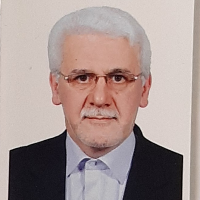A Study and Analysis of the Theory of The End Of Painting in Arthur Danto's Thought and the Continuation of Painting in the Works of Gerhard Richter
The present article studies and analyzes two different viewpoints on art and philosophy of contemporary art. On the one hand, Arthur Danto's philosophical views on the challenges of definition of art that lead to the theory of the End of Art and the Death of Painting, and on the other hand, the thought and works of Gerhard Richter, which led to the revitalization of painting. According to Danto's theories, the main purpose of this research is to study the position of painting after its announcement in the works of the German contemporary artist Richter and seeks to respond to topics such as the definition of art and the role of aesthetics in contemporary art. The main question is: why and how, after technological advances in the structure and methods of creating and producing works of art, the entrance of new media and challenges in the basic concepts of aesthetics, the art of painting returned to the Avant-garde art scene and revived? To answer this question, Danto and Crimp's views on the End of Painting were first attention in a descriptive-analytical manner, and then the important role that Richter played in reviving the painting was discussed. The results of the research show that in such conditions, Richter knows painting as something beyond the image, and as this process continues, he opens a modified view of art history, which is a way to find personal and historical language in postmodernist experiences. Arthur Danto's attempt to evaluate Endism in the late twentieth century has been a source of inspiration for many contemporary artists and theorists. He believed that painting could survive only if it negated itself and could continue the efforts of conceptual and avant-garde art. Danto does not claim that no one works in art anymore, nor does he claim that no good art is made anymore, but he believes that a certain history of Western art is over and that "Art after the End of Art" pursues a new goal. In the face of this pluralism, Gerhard Richter focused his artistic work on how to continue painting in the face of the End of Painting and created a collection of artworks in which a critical and in-depth understanding of art history can be found. His strategy was to cope with the End of Art and break the deadlock of painting in the 1960s by turning to photography and confronting the efficiency of photographic imagery as a means of representing the outside world. Richter turned to photo-painting as a way to deal with the crisis in painting. Instead of creating his subject or inventing it, he turned to painting from photographs, thus trying to overcome the artificiality of painting and bring reality back to his artworks. But what is interesting about his work is the connection with his predecessors, the endless sequence of realism and abstraction that is evident from the juxtaposition of the paintings. A realistic view that goes to abstraction in the next work and reality is redrawn with a reference to abstraction. An endless rotation that spins on Richter's career path. The general goal is to know and discover correctly the issue of the End of Art and the Death of Painting and to determine the boundaries of art from non-art in the contemporary world and to explain the impact of these philosophical theories on art. When signs of Death of Painting were ubiquitous in the 1980s, even in the painters' own works, artists allowed their paintings to blend in with alien elements such as photographic images. Only in this kind of manifestation, which was in fact a kind of conceptual painting, could painting have a place for itself in the life of new art, and there was no way for it, except to infiltrate itself in some way in critical discourse and avant-garde approach and try to theoretically challenge art and painting while creating a work of art. In the contemporary interpretation, art was no longer a process of creation and construction, but a product of study, thought, and theoretical challenge. Danto found an infinite variety of art, as if the contemporary artist had invented a new kind of it, so that if one wishes, can interpret the End of Art not as the beginning, but as an invitation to unfettered freedom. He guided the way for a new kind of critique that could help us understand art in the post-history era. On the other hand, Gerhard Richter willingly declared his heartfelt allegiance to the great tradition of Western painting, and with his diligence in this field, he revived the Painting after the End of Painting. Richter's every attempt to add meaning to the photographs was his attempt to create illusion and nothingness. He used the artificiality of his artwork to cast doubt on what people thought of the photographs. If there is nothing to cherish, one's belief in the reality of photography is challenged. In this regard, Gerhard Richter's message should be clearer than anyone thinks. The truth has never existed. Therefore, enjoying art never seeks reality or truth, but pursues the labyrinth in the image, uncertainty and nothingness. This paper is extracted from PhD dissertation titled «Analysis and Criticism of Arthur Danto’s Theory about The End of Art and The Death of Painting Based on Gerhard Richter’s Ideas and Works» written by the first author under the supervision of the second author at the Central Tehran Branch of Islamic Azad university.
- حق عضویت دریافتی صرف حمایت از نشریات عضو و نگهداری، تکمیل و توسعه مگیران میشود.
- پرداخت حق اشتراک و دانلود مقالات اجازه بازنشر آن در سایر رسانههای چاپی و دیجیتال را به کاربر نمیدهد.




